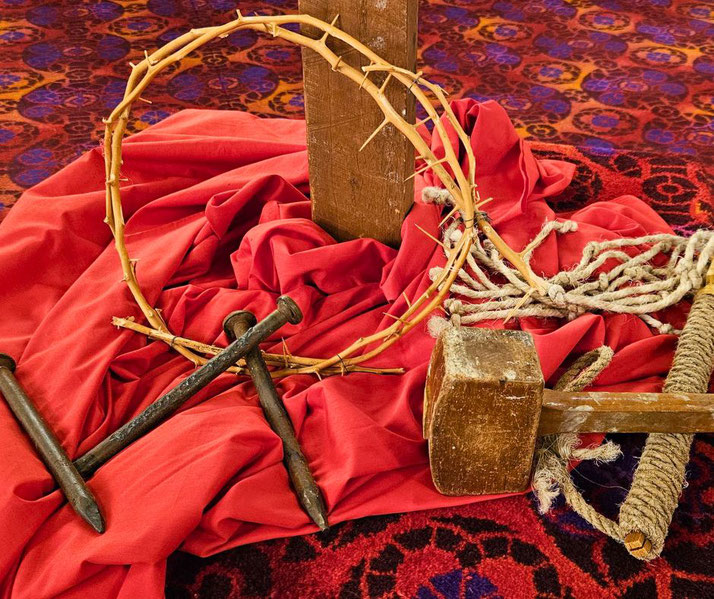From Jesus to Spartacus: Famous moments in history when crucifixion was used

To rule an empire, fear often did more than weapons ever could. For the Romans, crucifixion became a tool to hold onto power without saying a word.
But sometimes, the message backfired. From Spartacus the slave to Jesus of Nazareth, those crucified didn’t always stay silent in history.
What is 'crucifixion'?
Crucifixion was a way of putting someone to death by fixing them to a wooden cross or pole and leaving them to die.
It was used often by the Persians and Romans, and maybe by the Carthaginians, though the evidence for the Carthaginians mainly came from Roman writers and was limited.
It was seen as one of the most violent and painful forms of punishment in the ancient world.
The person was usually stripped naked, tied or nailed to a wooden frame, and left exposed to the weather.
Death could take hours or even days and was often caused by a mix of blood loss, shock, dehydration, and suffocation.
The slow nature of the method was deliberate, meant to increase suffering and terror.
One of the earliest known examples was by the Persian king Darius I, who, according to Herodotus, crucified around 3,000 Babylonians after their revolt in 519 BC.
The word 'crucifixion' comes from the Latin word crux, meaning cross. There was no single shape of cross used.
Victims could be fixed to a simple upright pole, a T-shaped frame (crux commissa), or the well-known crossbeam shape (crux immissa).
Crucifixion was a deliberate public show. Victims were shown in open places to scare others into obeying, often at city gates, crossroads, or busy roads.
The horror came not only from the pain but also from how public it was.

Why was crucifixion used?
Crucifixion was used to punish crimes that rulers wanted to deter by spreading fear.
It was also used for military and political purposes. The Romans used it for slaves, rebels, pirates, and the worst criminals.
Roman citizens were usually not punished this way under laws such as the Lex Porcia and Lex Julia, unless they were found guilty of betraying Rome.
The shame of crucifixion was seen as fitting for people who had broken major rules.
By using the cross, rulers showed that lawbreakers were completely crushed and shamed.
Writers like Seneca and Cicero called it the most painful and shameful form of death.
Roman rulers often used crucifixion after rebellions or unrest. After an uprising, hundreds or even thousands could be crucified at once. The bodies were usually left to rot where they died.
This added to the fear. It was remembered by everyone who saw it. Some written accounts describe roads lined with crosses on the way into towns.
How did crucifixion work?
The process began with a public sentence, often followed by whipping. Victims carried the crossbeam (patibulum) to the place where they would be killed.
There, it was fixed to a post (stipes) that was usually already set up and could be used again for other executions.
The person was either tied or nailed through the wrists and feet. Unlike many later artworks, nails were not always used.
Tying was more common, though nails made the death faster and more painful.
The position made breathing hard, and victims had to push up on their wounded feet to breathe in.
A small sign (titulus) naming the crime was sometimes placed above their head.
Crucifixion caused many kinds of suffering. Pain from the injuries, tiredness, exposure, and thirst all added up.
Often, birds or animals would attack the body while the victim was still alive.
Death usually came from not being able to breathe anymore. In the end, the person could no longer lift themselves to take in air.
If this took too long, the executioners might break the legs to make death come faster, a method called crurifragium.
Famous uses of crucifixion
One of the most famous examples of crucifixion was the death of Jesus of Nazareth, around AD 30 or 33.
As a Jewish teacher who had gained followers and upset religious leaders, Jesus was arrested and handed over to the Roman governor Pontius Pilate.
The Gospels say he was whipped, mocked, and taken to a place called Golgotha, where he was crucified with two other criminals.
The event became central to Christian belief and remains one of the most discussed moments in religious history.

Another major case happened in 71 BC after the defeat of Spartacus. He was a Thracian gladiator who led a large slave rebellion in the Roman Republic.
When the uprising was stopped by the general Marcus Licinius Crassus, over 6,000 captured rebels were crucified along the Appian Way between Capua and Rome.
The sight of so many crucified bodies along a main road was meant to crush any thoughts of resistance among slaves or supporters.
This remains one of the largest known mass executions in Roman history.
Further mass crucifixions happened under the Roman general Varus in 4 BC, when 2,000 Jewish rebels were killed after uprisings that followed the death of King Herod.
The historian Josephus wrote that during the siege of Jerusalem in AD 70, so many people were crucified by the Romans that there was a shortage of wood for the crosses.
Archaeological evidence of crucifixion
Even though crucifixion was used often, physical proof of it is rare. The damage to soft tissue from the punishment does not last, and nails were usually taken out and reused.
But a major discovery in 1968 near Jerusalem gave the first clear archaeological evidence.
Archaeologists found the skeleton of a man named Yehohanan, and a nail was still stuck in his heel bone.
This showed that the Romans sometimes nailed the feet through the sides, and not always through the top as people once thought.
His burial also shows that his family may have taken back his body, which was not typical Roman practice.
Other possible remains have been found, but few are certain. Archaeologists also found a skeleton in Cambridgeshire, Britain, from the 1st or 2nd century AD. It had a heel bone with a hole that matched crucifixion.
In 2007, archaeologists in northern Italy found another skeleton with possible signs of crucifixion, though the nail was missing and the evidence is still debated.
These discoveries are rare but useful, which backs up what written records say and helps explain how crucifixion was done in different times and places.
The lack of remains does not mean it was rare. It means crucifixion left little trace, and many who died this way were denied proper burial.

What do you need help with?
Download ready-to-use digital learning resources
Copyright © History Skills 2014-2025.
Contact via email
With the exception of links to external sites, some historical sources and extracts from specific publications, all content on this website is copyrighted by History Skills. This content may not be copied, republished or redistributed without written permission from the website creator. Please use the Contact page to obtain relevant permission.





